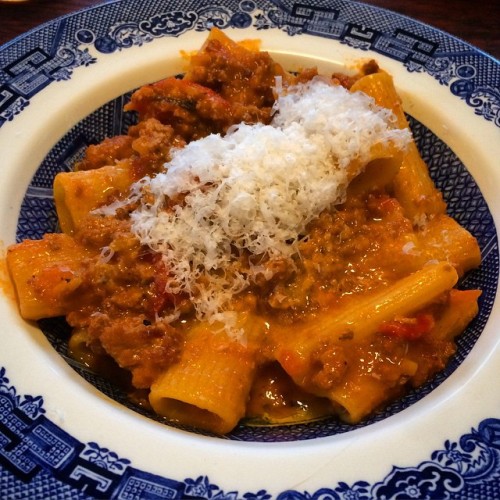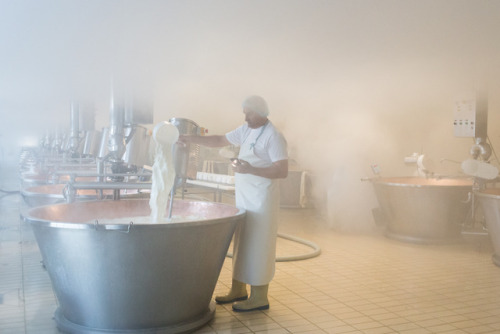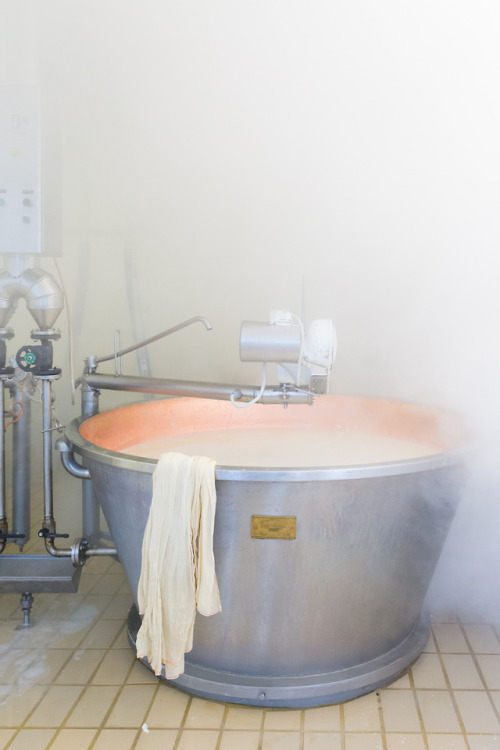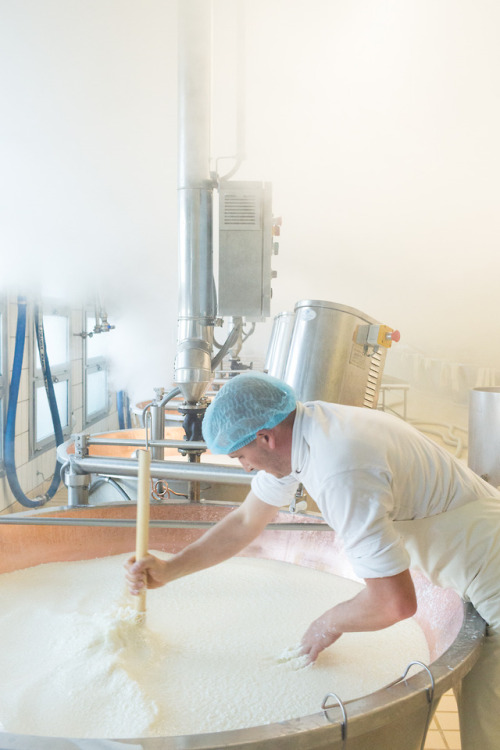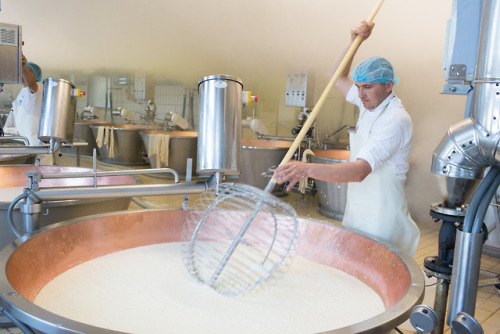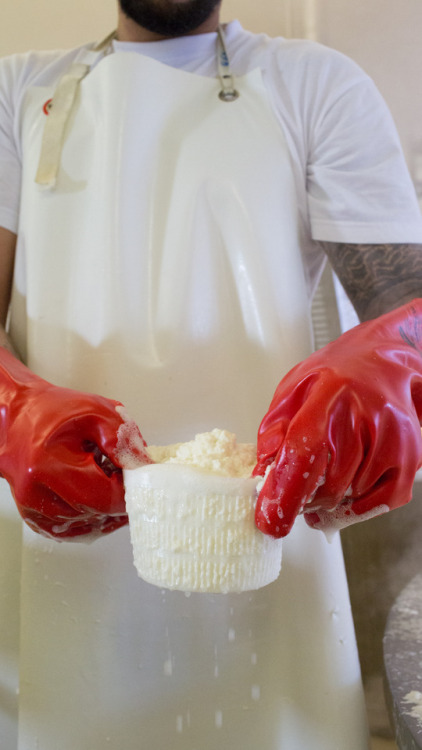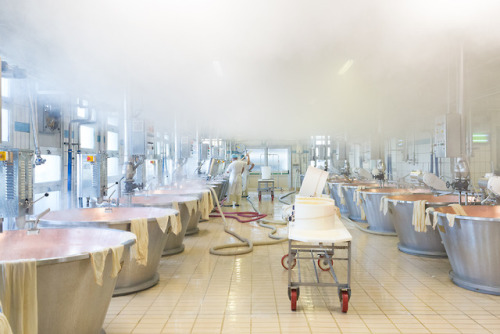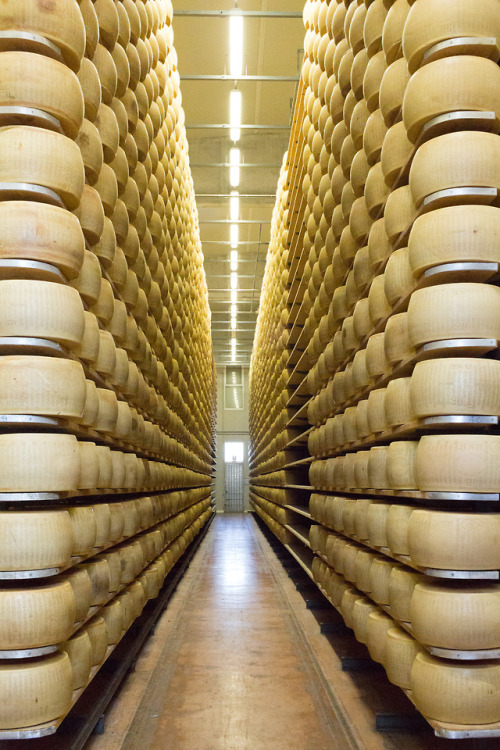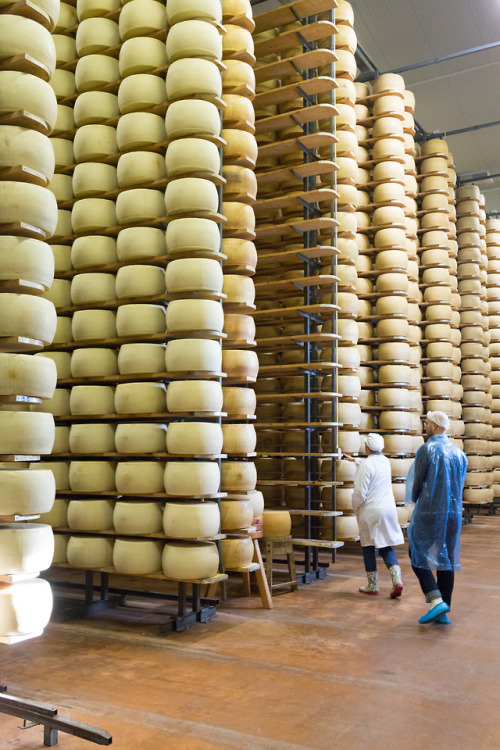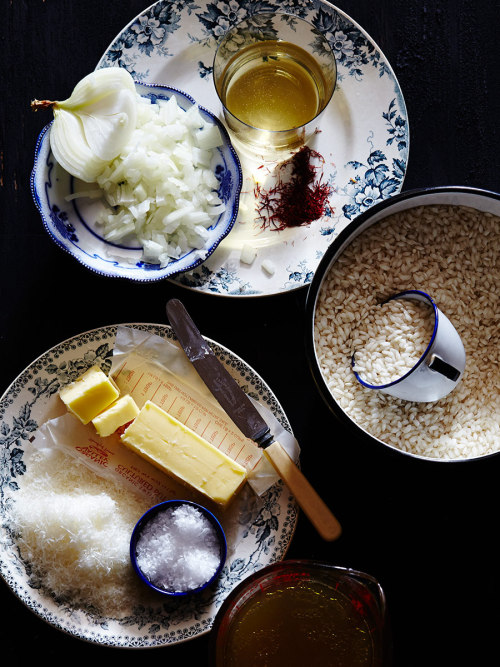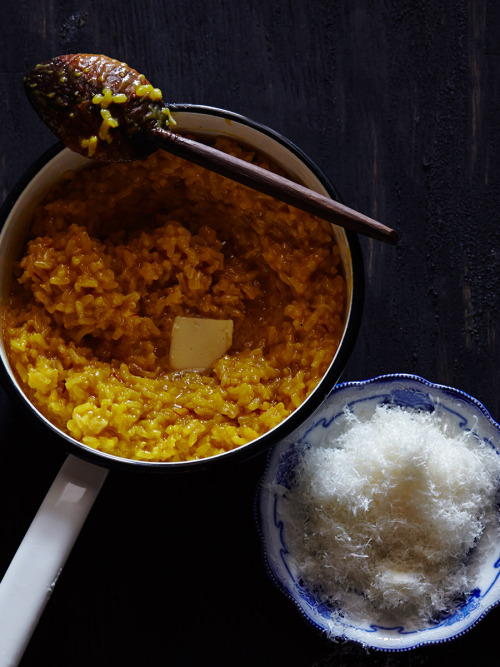#parmigiano
A Parmigiano Steam Bath
Location: Castelnovo Sotto, Italy
While count ourselves amongst the world’s most passionate lovers of the salty, crystalline, cheesy wonder that is Parmesan, we must admit, we didn’t really know much about how it was made until we found ourselves in a dairy steam bath just outside of Parma. Stepping inside Latteria La Grande in Castelnovo Sotto was in instantaneous education. Our trusty guide, Anne, would show us how the cheese is made from milk to wheel.
Latteria La Grande is a coop, where milk from surrounding farms is sent to be made into D.O.P. Parmegiano Regianno. That label is highly protected, and designates that the cheese has come from this very particular area in Northern Italy. We can all conjure the image of the brail-like writing on the rind of a nice hunk of parm, but did you know that was the in effect, the cheese’s birth certificate? It tells those in the know where the milk came from, where the cheese was made, and what grade it received from the Parmesan experts.
The factory is dense with steamy fog, billowing off copper cauldrons of fresh, local milk. Cheesemakers whisk and mix the milk, adding whey to cause the milk to curdle. Those curdle are allowed settle on the bottom of the conical copper vats, into a piece of cheesecloth. The solids are lifted up, a task requiring Olympic strength, already in bound together in one solid form. That form is cut in half with an impressive knife, and then the cheese is pressed into spring form molds. At this point, we just have a soft cheese, but after about a month submerged entirely in a bath of salty brine, the moisture is drawn from the wheel, and it is ready for aging.
Skipping the halls of the Latteria is a pleasure we can only hope you someday come to know for yourself. Rows and rows of delicious cheese from floor to celling, and a scent that actually reminds one more of blue cheese than parmesan. Anne shows us how each wheel is tested after one year of aging, knocking on one with a tiny brass hammer. She listens, perching her ear close to the majestic wheel. She can hear the density of the cheese, how consistent the texture is, and can predict how much time it needs to age. And finally, we have a chance to taste the cheese at its various stages of aging, from one year to three years. We notice the increase in crystals and complexity over time. And of course, we buy a hunk of each one.
Post link
Risotto Milanese
serves 2-4 with leftovers for arancini, arancini recipe coming soon…
3 T extra virgin olive oil
½ a Spanish onion, diced
1 t + 1 pinch salt
2 ½ c carnaroli rice
1 c dry white wine
1 t saffron
2 T unsalted butter
1 c grated parmigiano reggiano + more for serving
1. In a large pot, heat olive oil on medium heat. Add onion and a pinch of salt. Cook until translucent, 4-5 minutes. Set broth to simmer on another burner.
2. Add rice to the pot with oil and onion, then toast for 1 minute, stirring constantly with a wooden spoon. Turn heat to medium high, and add the wine. Keep stirring. Cook until alcohol has evaporated, a minute or two, then begin to ladle in the hot broth.
3. In a small mug place the saffron and one ladle of hot broth. Cover and set aside to steep.
4. Continue stirring and adding broth as necessary. Do not bathe the rice. You must wait for it to ask you for more liquid; when you hear the rice slurping off the bottom of the pot as your stir, this is when you add more broth. Total cooking time once you begin adding broth should be approximately 20 minutes. When the broth is finished, add the broth you have aside steeped with saffron and 1 t salt (if you are using a well salted broth, you may consider using less salt here). Stir to incorporate thoroughly, then turn off the flame, cover and allow to rest for 5 minutes.
5. Add butter and grated parmigiano reggiano, stir to incorporate thoroughly and until the butter has melted, taste for salt, and adjust as necessary.
6. Serve topped with more grated parmigiano reggiano.
Make arancini with your leftovers!
Post link


